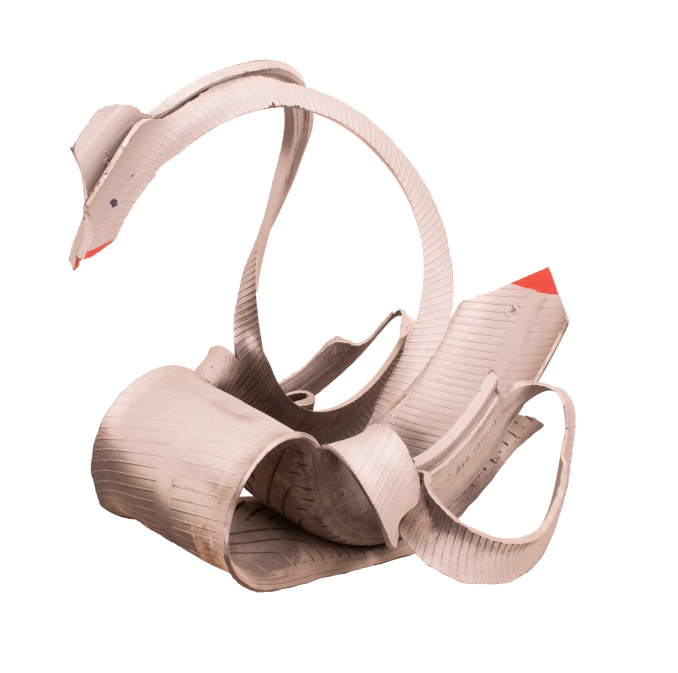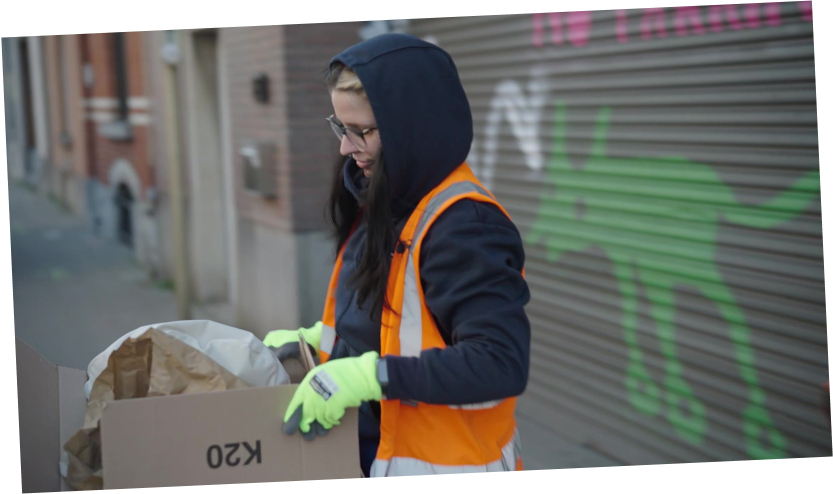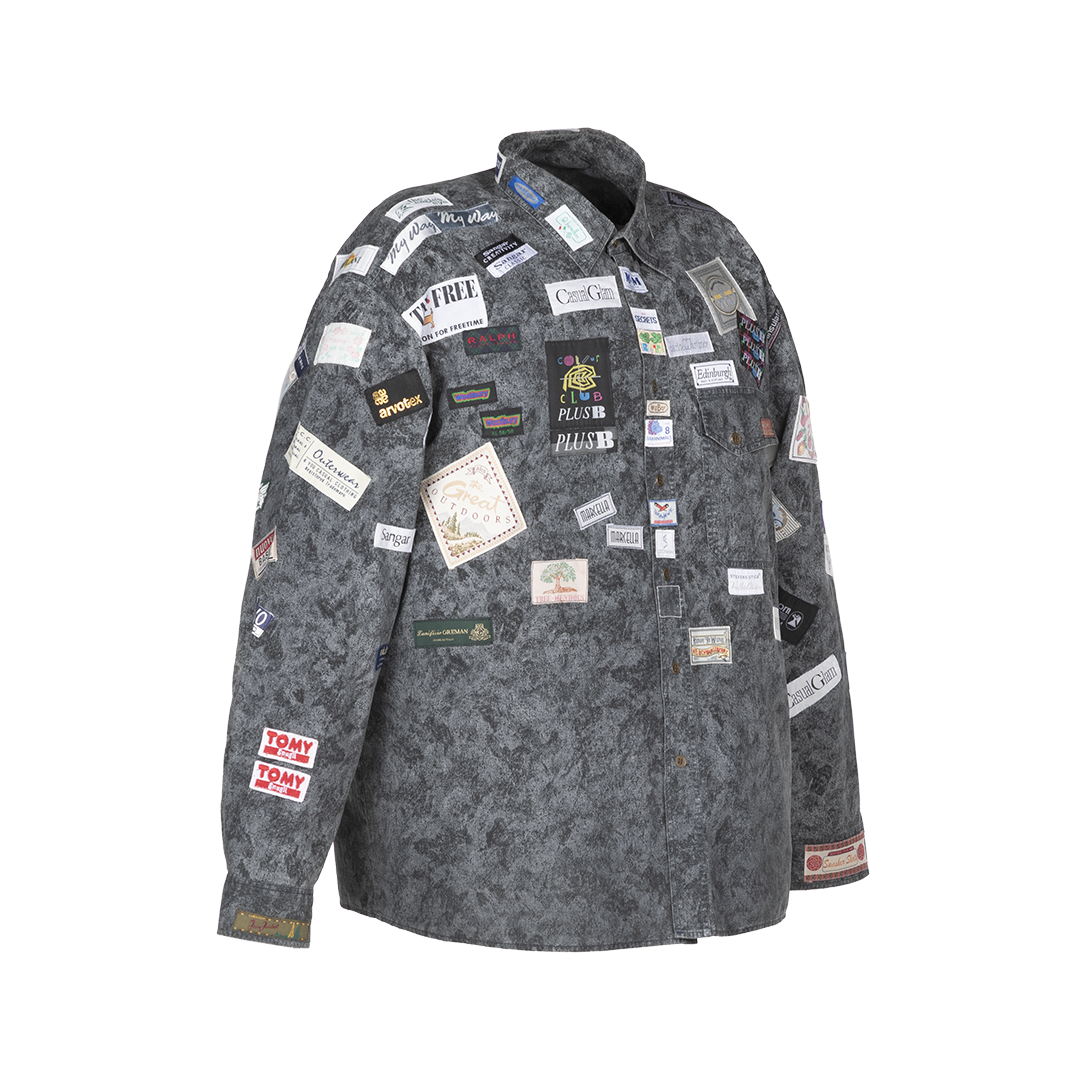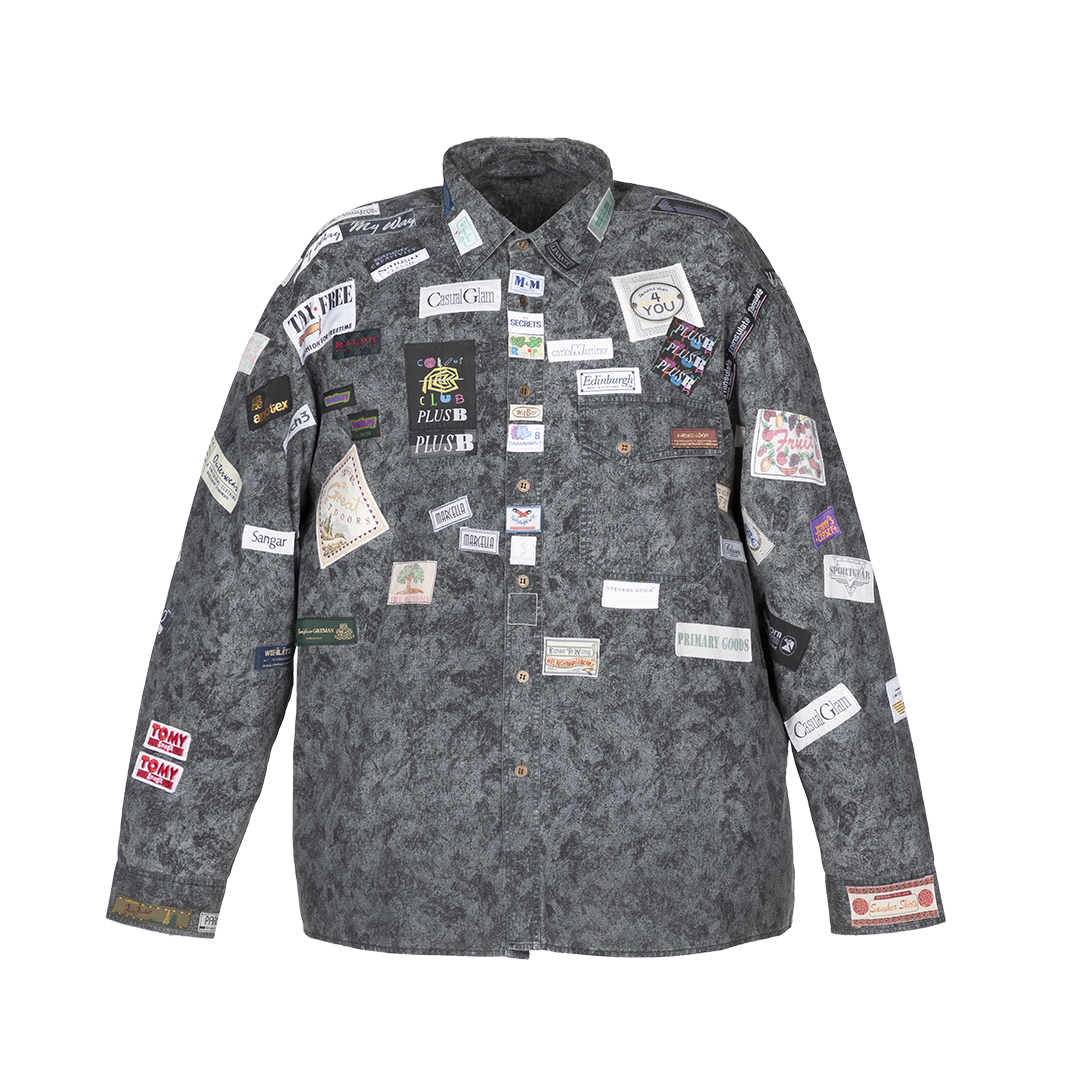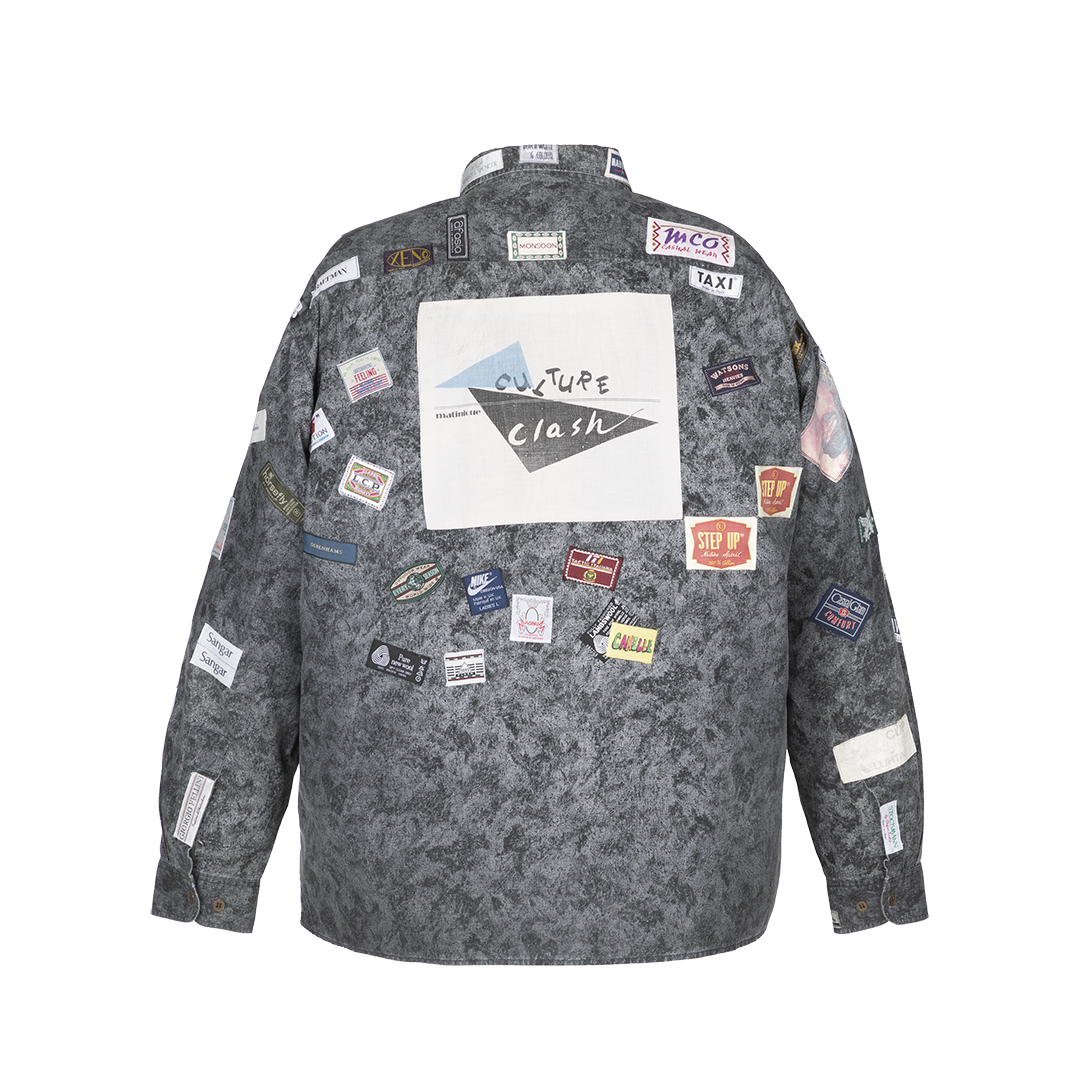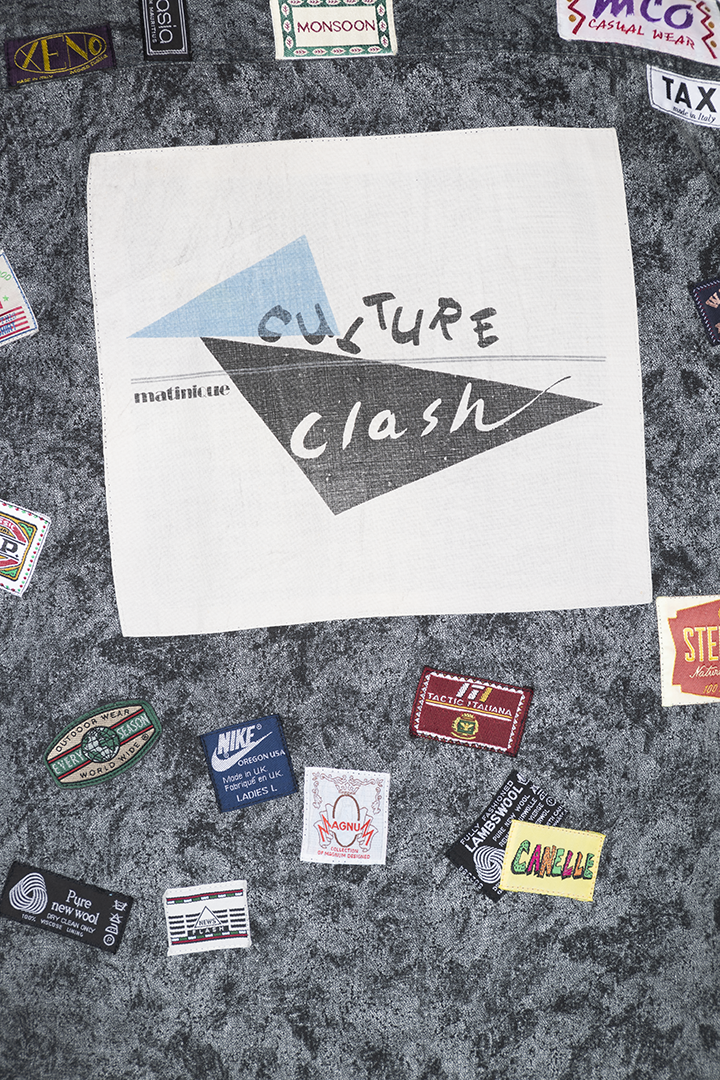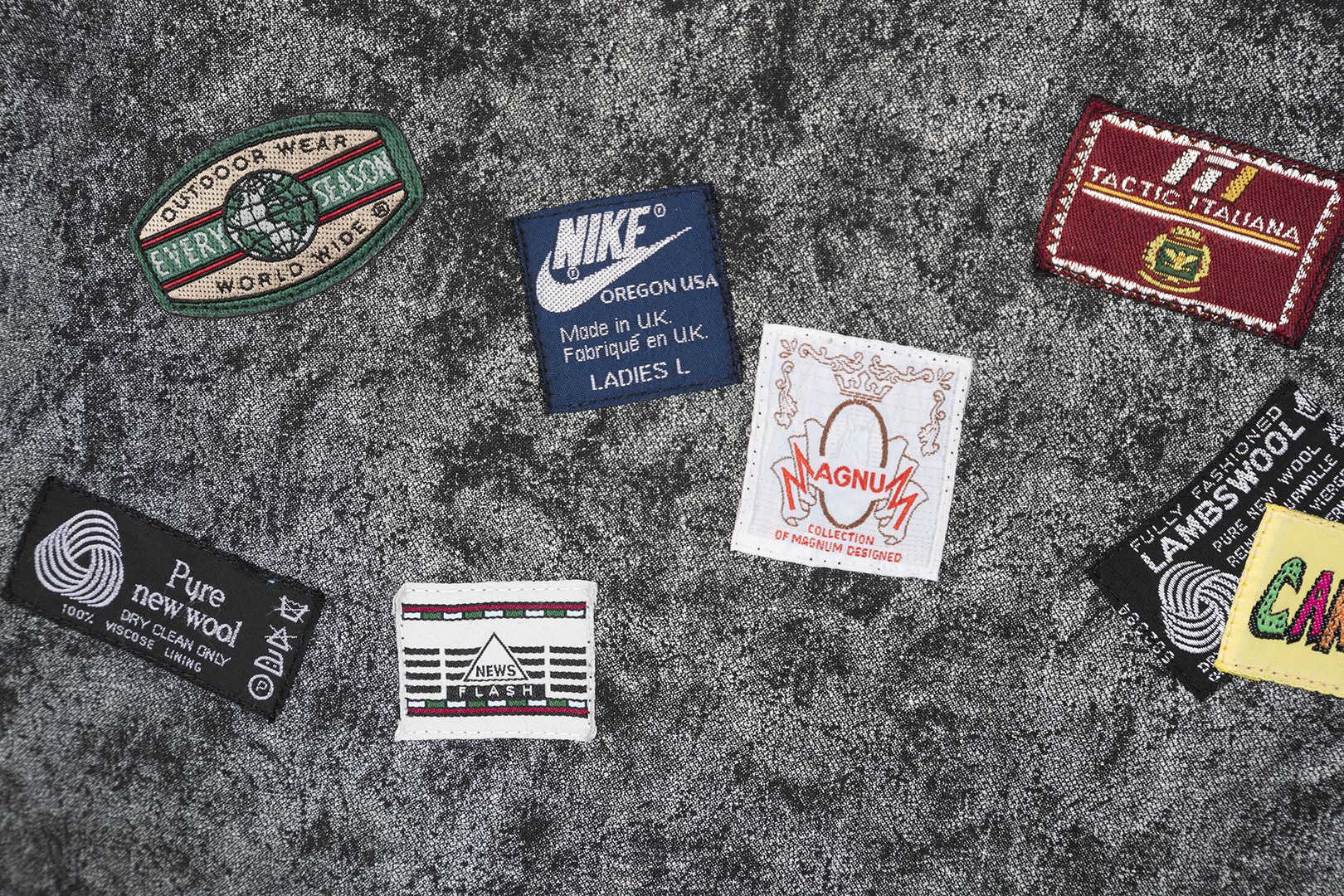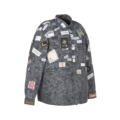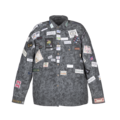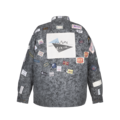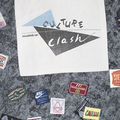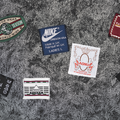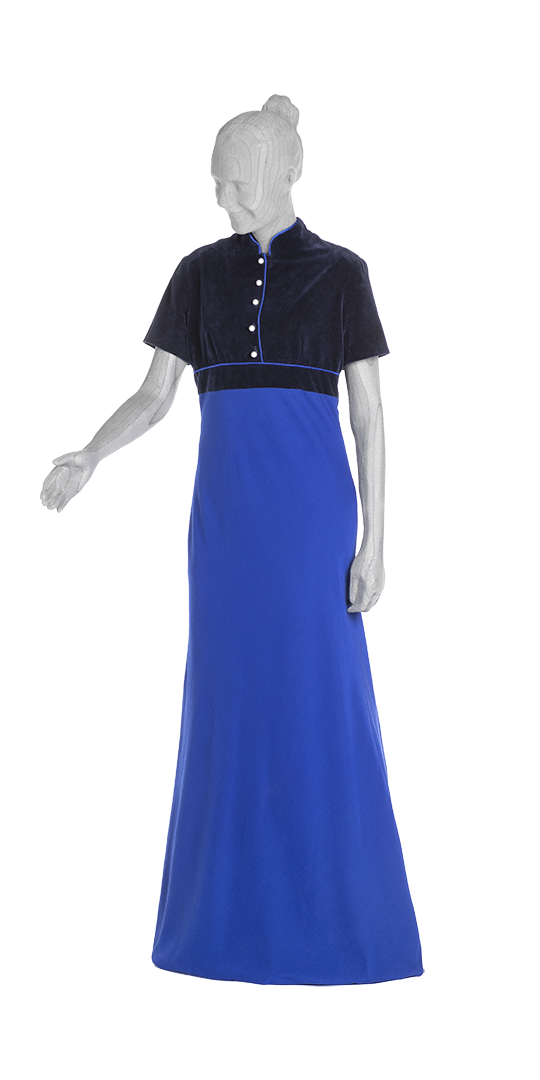Творец/Създател Re-making by Urve Sinijärv
Дата на производство/създаване
Сангар
Влизане в музейната колекция
1990
Място на произход
Частна колекция
Настоящо местоположение
Естонски национален музей, Тарту, Естония
Материални
Памук
Измерение
Височина × ширина × дълбочина: 80 × 50 × 10 cm
Номер на инвентарния опис ERM A 1066:6
Ключова дума Модни обувки Повторно използване Текстил
Авторско право Естонски национален музей
Признаване Съхранение/колекции на текстил
Кредит на изображението Естонски национален музей
Shirt украсена с търговски наименования и логотипи.
What is this object about, who are the people behind it?
The object is a fashionable men’s long-sleeved shirt adorned with different logos and brand names, which was worn in the university town of Tartu by poet and writer Karl Martin Sinijärv, who later became the chairman of the Estonian Writers’ Union.
Poet Karl Martin Sinijärv could not remember exactly how he got this shirt: ‘It must have been one of those almost black shirts from the Sangar shirt factory, retailed under the name Casual Glam. At some point in the 1990s, while throwing away another item of clothing, I felt a tinge of guilt and thought I would at least cut off the beautiful label. It felt like a silly thing to do at the time. But then I ended up removing the labels from several other garments and the idea popped into my mind to sew them onto this black shirt in the style of badges. The aim was to glorify and mock the money cult of the 1990s and the desire for a new age. Urve continued to sew labels onto the shirt, leading to a sizeable collection over the years. The shirt even gave rise to redefining a modern science: “If a label denotes a thing and the thing denotes the label, but the thing that the label denoted is, in fact, a completely different thing that in turn has its own label and everything is as mixed up as an upside-down, inside-out shirt, then this is what we call semiotics.” Very typical of the university town of Tartu. At some point the world changed and the shirt embellishing ended. It stayed in the cupboard for a long time. Until the 1990s had become part of history and my son had to find some clothes for a 1990s-style party at school. This is how the shirt found a new lease of life under the sun, which may hopefully carry on in this museum.’ Those with a keen interest in the history of fashion will be able to recognise some of the 1990s brands, which have now gone into the recycling bin of history.
What places is this object related to, how European/transnational is it?
The visuals of very different brands is an intriguing story about the recent history of changes in the European textile industry; about what brands were popular among young people; what designs designers used; and why some of the brands have disappeared from the world market in both Eastern and Western Europe for their environmental footprint; even though this particular men’s shirt was manufactured from quality material in Estonia.
Why and how did this object arrive in the museum’s collection?
Every year, in cooperation with schools and educational institutions, the Estonian National Museum organises the educational programme ‘Time Travels’ (Ajarännakud) and this shirt gave a student from Tallinn Secondary School of Science a chance to experience life in the 1990s, the period after Estonia regained independence (society in transition, beginnings of private enterprise, new fashion trends, etc.). The shirt as an object has been given to the Estonian National Museum and will enhance the Museum’s permanent exhibition Encounters.
What is the relation of this object to waste?
At some point the world changed and the shirt embellishing ended. The shirt had stayed in the parents’ wardrobe for a long time, until the nostalgia for recent history made the 1990s popular again and this garment could be used at a 1990s party.
Those with a keen interest in the history of fashion will be able to recognise many of the popular brands from a couple of decades ago that have now gone into the recycling bin of history.

